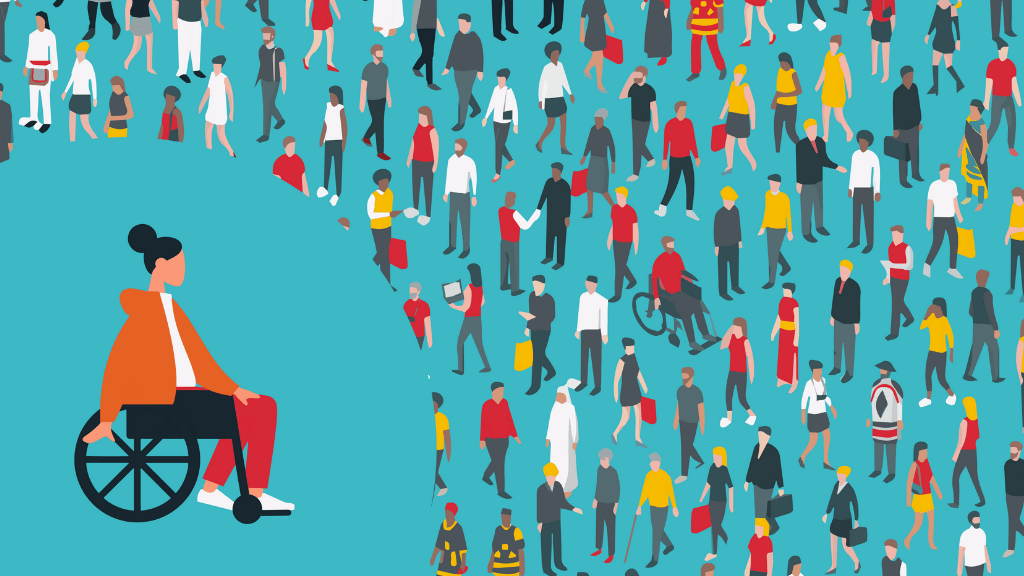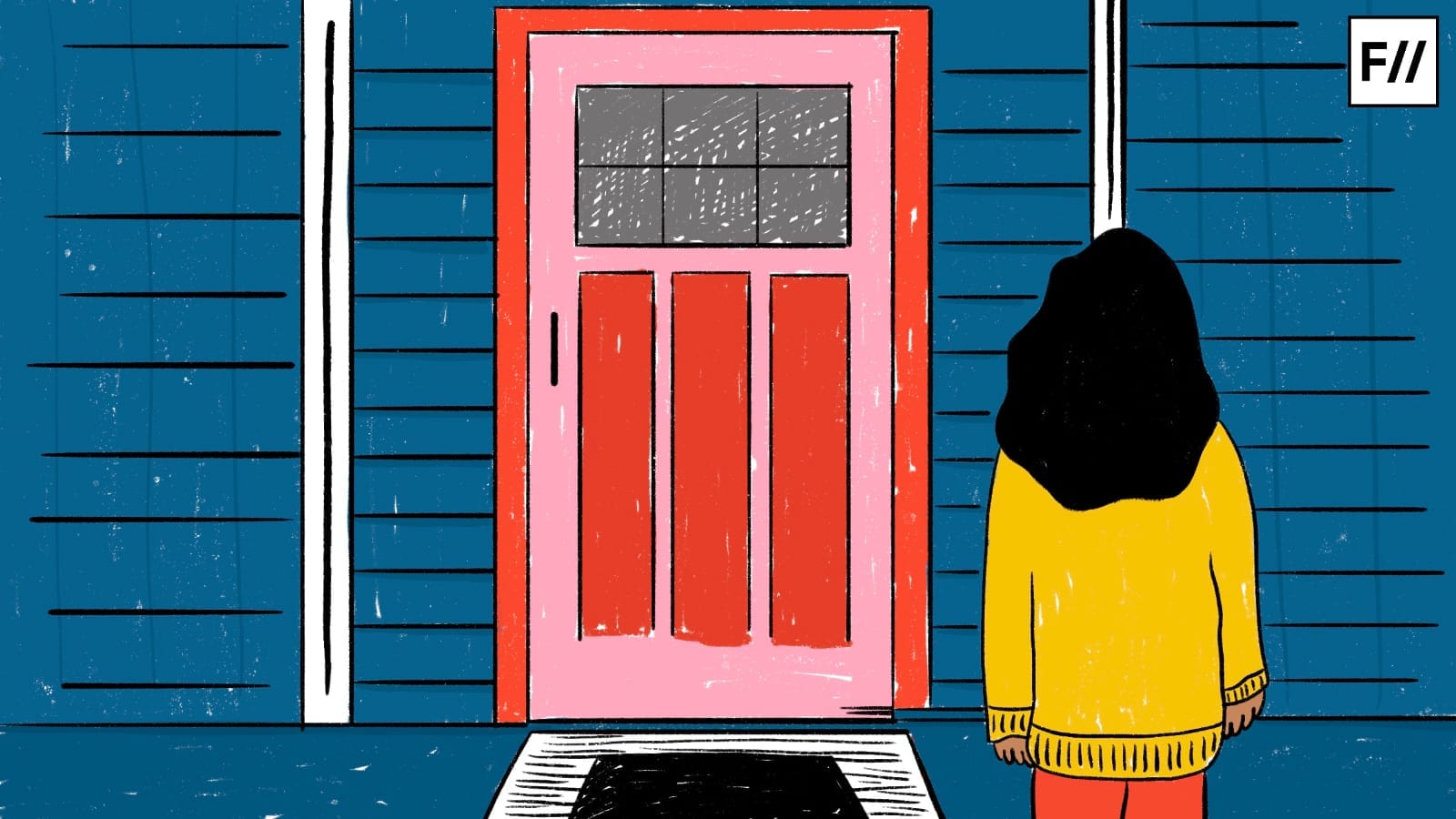Trigger Warning: Rape and Violence
A nine year old girl with hearing and locomotor disability was gang-raped and killed in Pashchim Amjhora, West Bengal on 4th January 2023. Pursuant to this, Paschimbanga Rajya Pratibandhi Sammilani (PRPS), the largest disabled peoples’ organisation in West Bengal staged a protest asking for strict action against the cuplrits. On January 7, reports emerged that a hearing-impaired woman was raped in Keshia, a village in the Garbeta-3 block of the Pashchim Medinipur district.
The repeated incidents of violence against disabled women are not individualistic. They are rather systemic. A 2004 study in Odisha found that nearly all women and girls with disabilities were beaten at home, while 25 per cent of those with intellectual disability had been raped. A report by HRW, Treated Worse Than Animals, from 2014, documents the shocking abuse of women and girls with intellectual disability in Indian institutions.

Rape trials in India are very hard for the victims to traverse. Disabled women face triple marginalisation in such a social setting. Firstly, they are subjected to far more crimes than able bodied women and secondly, they are subjected to patriarchal and paternalistic presumptions and stereotypes in courts. Thirdly, the normative standards of an ideal able bodied victim are imposed on their disabled bodies. The biases inherent in the recording of evidence in the cases involving rape trials is a clear example of this triple marginalisation.
The Ableist Law
The Indian evidence act was drafted by James Fits James Stephen who was a utilitarian. This made him enshrine the principle of best evidence rule in the act, to ensure that frivolous and weak evidence is not admitted, thereby leading to unfair and inefficient results. Resultantly, the evidence act aims at achieving efficient and more importantly impartial results. The law presumes universality of subjects because any form of difference in the subjects is presumed as being a threat to the idea of difference. Even when the law allows for the recording of testimony of a subject which does not meet the normative standards of an ideal subject, there are conditions imposed.
In a lot of cases, the evidence of disabled women is not recorded by the investigating agencies and the lower courts. In a few other cases, their testimonies are not recorded as per the correct legal procedures. There are numerous cases where the accused is acquitted at the appellate stage as the victim is not examined. But the failure of recording evidence of women with disabilities indicates the biases of the investigating authorities that presume that the evidence of women with disabilities is unlikely to have any bearing upon the outcome of the case whatsoever.
For instance, section 119 of the Indian evidence act states that evidence can only be recorded when it is presented before the court in an intelligible fashion. For instance, if an individual with speech or hearing impairment intends on testifying before the court, the court ought to rely on sign language interpreters for recording evidence.

Thus the evidence law presumes the able body that can speak in the language of the able bodied to be the ideal witness. Others who do not fit in this matrix bear the burden of speaking in the language of the able bodied, even when their physical impairments stop them from speaking in that language. It is this construction of law that leads to devaluation of evidence given by women with disabilities in rape trials.
Ableist courtroom practices
Besides the formal rules of evidence, the court practices which are replete with patriarchy and ableism compound the difficulties faced by women with disabilities.
Also read: The Ableist Ruling Indian Government: Eugenics & Disability As Suffering
In a lot of cases, the evidence of disabled women is not recorded by the investigating agencies and the lower courts. In a few other cases, their testimonies are not recorded as per the correct legal procedures. There are numerous cases where the accused is acquitted at the appellate stage as the victim is not examined. But the failure of recording evidence of women with disabilities indicates the biases of the investigating authorities that presume that the evidence of women with disabilities is unlikely to have any bearing upon the outcome of the case whatsoever. In another case, the trial court merely recorded that the woman was not able to depose due to her disability, but the court did not mention her exact medical condition or if she was provided with any reasonable accommodation. This shows that the court presumes incompetence of the victim and makes little to no attempts to mitigate the accessibility barriers.
“The police did not help Chitra get legal aid. The staff of the residential shelter home helped her to find a lawyer, but the lawyer they found was not free of cost. It has been tough for her to continue with the lawyer. This has affected the progress of the case.“
Lokapriya Kanungo, National Advocacy Coordinator, Shanta Memorial Rehabilitation Centre
Further trend that emerges pursuant to a survey of these cases is that the courts also discard the testimony of the victim due to the lack of descriptive precision. In Gopal Bhoomik v. State of West Bengal, the court acquitted the accused as the woman could only convey that something was done to her vagina through sign language and started crying after that. The court discarded her testimony merely because she could not speak in the language of the able bodied and disposed off the burden of intelligibility.

In cases like Dilavarsab Alisab v. State of Karnataka, the infantilization of women with disabilities by the judiciary became evident. The court discarded the testimony of the woman with disability by relying upon medical reports. Sometimes the courts also discard the testimonies on the grounds of lack of medical injuries, the failure to report in time and the failure to raise an alarm.
“We have had no training. When we meet a disabled woman, we may not know how to speak to her properly. The police are not cruel. In most cases the police are simply ignorant. It is not that we don’t want to believe them, but we also worry that if we make a mistake, the wrong person will be punished. The police need education and we need to be sensitised on how to handle these cases.”
Commissioner, West Bengal
In Gopal Bhoomik v. State of West Bengal, the court acquitted the accused because even though the victim was speech impaired, she could make a loud noise. The failure to make a loud noise was used to draw an adverse inference against her and the accused was acquitted.
Courtroom environment
Besides the formal rules of the courtrooms, their environment is nothing close to disable friendly. A mother of a rape victim who had an intellectual disability notes her plight in a conversation with FII,
“When they led Gowri* away from me, she cried and screamed. The police explained to me that she would be able to see me and that they would bring her straight back to my lap. She couldn’t understand. She was terrified and believed she was being taken to a lock-up. This is partly a result of lack of resources to provide accommodation to the disabled and partly a result of lack of sensitisation of police.“
Also read: Disabled Bodies Navigating Abuse & Violence: #DisabledWomenRiot
FII spoke to the commissioner of West Bengal who said that, “We have had no training. When we meet a disabled woman, we may not know how to speak to her properly. The police are not cruel. In most cases the police are simply ignorant. It is not that we don’t want to believe them, but we also worry that if we make a mistake, the wrong person will be punished. The police need education and we need to be sensitised on how to handle these cases.”

Navigating the biases in the courtroom is not the end of the story of Women With Disabilities (WWDs). The high costs involved in litigation and the complexity of the criminal procedures compounds the plight of WWDs.
Lokapriya Kanungo, the National Advocacy Coordinator at Shanta Memorial Rehabilitation Centre, in a conversation with FII, described the case of Chitra*, a woman with low vision from Bhubaneshwar, Odisha, who was reported being raped in June 2013, “The police did not help Chitra get legal aid. The staff of the [residential shelter home] helped her to find a lawyer, but the lawyer they found was not free of cost. It has been tough for her to continue with the lawyer. This has affected the progress of the case.”
The construction of ideal victims in rape trials is already very problematic as it reeks of paternalism and patriarchy. It is also problematic because it generalises the experience of the victims, their perceptions, their responses, their reactions and their expressions, which are extremely individualised and particularised. This becomes doubly problematic in the cases involving women with disabilities, as the standards of “ideal” able bodied victims are imposed that do not have able bodies.
Also read: Coming Home To My Disabled Body
This is why there is a need to sensitise judges against the construction of an ideal disabled victim, as the burden of ableist laws already weighs heavy on them and the additional burden of morality and patriarchy compounds their challenges.
Names* of the victims have been changed due to security reasons.
About the author(s)
Anchal is a second year student at national Law school of India University, Bangalore.




